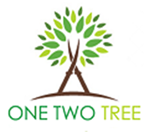Trees are a vital part of our lives, enhancing any landscape’s natural beauty and environmental benefits. However, when poorly managed or left to be compromised by disease or decay, trees can pose a serious risk to your property and the safety of those around it. Identifying and managing hazardous trees should be a priority for any homeowner or community, ensuring a secure environment for all. Recognizing the warning signs of potential hazards and understanding the appropriate interventions is essential for both tree preservation and public safety.
In this article, we will delve into the process of identifying hazardous trees, the importance of preventative measures, and how managing these trees can safeguard your property and community. Furthermore, we’ll explore how partnering with One Two Tree can provide unrivaled expertise in addressing and eliminating tree hazards, ensuring your landscape remains in optimum condition while prioritizing safety.
Many factors contribute to a tree becoming hazardous, ranging from disease, structural instability, or damage caused by weather events. Identifying these signs early on is crucial in preventing catastrophes and maintaining the health and well-being of the surrounding environment. Prompt action upon discovering a hazardous tree can minimize the damage and costs associated with remedial measures, ultimately keeping your property and loved ones safe.
Our team is devoted to providing professional and reliable tree maintenance services, including identifying and managing hazardous trees. With certified arborists on staff, we can assess and implement the most suitable solutions to address any dangers presented by the trees on your property.
Warning Signs of Hazardous Trees
To effectively manage hazardous trees, it’s essential first to recognize the various warning signs that indicate potential problems. Here are some common indicators of a hazardous tree:
1. Dead or Dying Branches
A common sign of a hazardous tree is the presence of dead or dying branches. These branches are more likely to break off and fall, posing a risk to property or people below.
2. Unusual Fungi or Insect Infestations
The presence of fungi or insect infestations on the tree trunk or near the root system could indicate internal decay or disease, weakening the tree and making it susceptible to failure.
3. Cracks or Splits in the Trunk
Visible cracks or splits in the tree trunk, especially around significant branches, are often indicators of severe structural issues that can lead to tree failure.
4. Leaning Trees
A sudden or severe lean in a tree is often a warning sign of structural instability, and action should be taken immediately to prevent possible damage or injury.
Preventative Measures for Maintaining Tree Health
Managing hazardous trees effectively requires a proactive approach that includes preventative measures to maintain your trees’ overall health and stability. These steps can help increase the lifespan of your trees and prevent potential hazards:
1. Regular Pruning
Regular pruning can improve the tree’s health, appearance, and structural integrity by removing dead, dying, or diseased branches and promoting healthy growth.
2. Periodic Inspections
Arranging for regular tree inspections can help identify potential risks early and allow for prompt intervention, minimizing damage and costs associated with tree hazards.
3. Treatment of Disease or Pest Infestations
Early identification and treatment of tree diseases or infestations are vital in preventing significant damage and maintaining tree health. Professional guidance from a certified arborist can help ensure proper treatment methods are employed.
One Two Tree: Expert Solutions for Tree Hazard Management
Partnering with us for expert assistance in managing hazardous trees on your property offers numerous advantages:
1. Certified Arborist Guidance
Our team of certified arborists has extensive knowledge and experience in tree care that can help assess and diagnose potential hazards and recommend the most appropriate course of action.
2. State-of-the-Art Equipment and Techniques
We utilize the latest equipment and techniques to address hazardous trees safely and effectively. This commitment to providing top-notch service ensures the best results for your landscape and community safety.
3. Comprehensive Tree Care Services
In addition to identifying and mitigating tree hazards, we provide a full range of tree care services, from routine maintenance to emergency tree removal. This comprehensive approach to tree care enables us to address your unique needs and maintain the health and beauty of your property.
Creating a Safe Community with Proactive Tree Management
By actively managing hazardous trees in your community, you contribute to the safety and wellbeing of those around you. Here are some ways to foster a secure environment for all:
1. Encourage Neighbors to Assess and Address Tree Hazards
Promote awareness of tree hazards within your community and encourage neighbors to take action to address any concerns they may have regarding trees on their property.
2. Collaborate with Local Agencies and Organizations
Work with local agencies, organizations, and certified arborists to develop and implement community-wide strategies for tree hazard management and preventative care.
3. Establish Tree Planting and Maintenance Programs
Initiate tree planting and maintenance programs throughout your community to create a more vibrant, healthy, and safe environment for all to enjoy.
Conclusion
Ensuring your property’s and community’s safety is paramount, and understanding the importance of identifying and managing hazardous trees is essential in achieving this goal. Partnering with One Two Tree and our team of experts provides peace of mind, knowing that your landscape’s health and stability will be expertly managed. Contact us today to schedule an appointment for tree removal in Atlanta. Take the first steps toward securing a safe environment for yourself and your neighbors while enjoying the enduring beauty of a well-maintained landscape.

